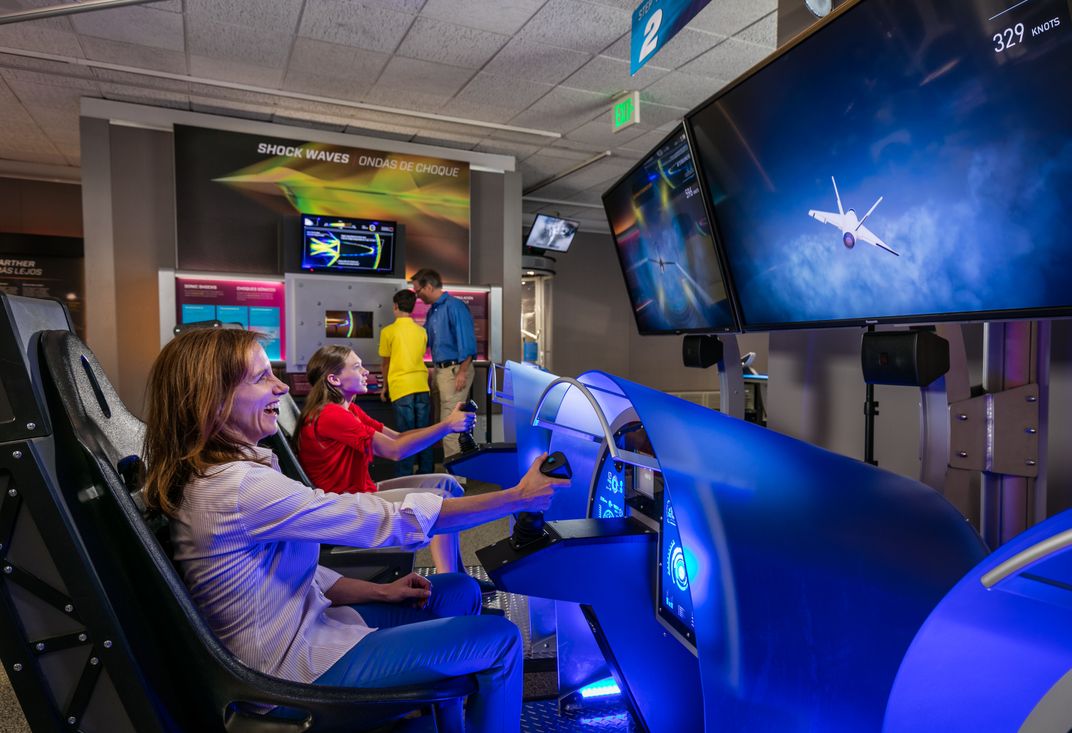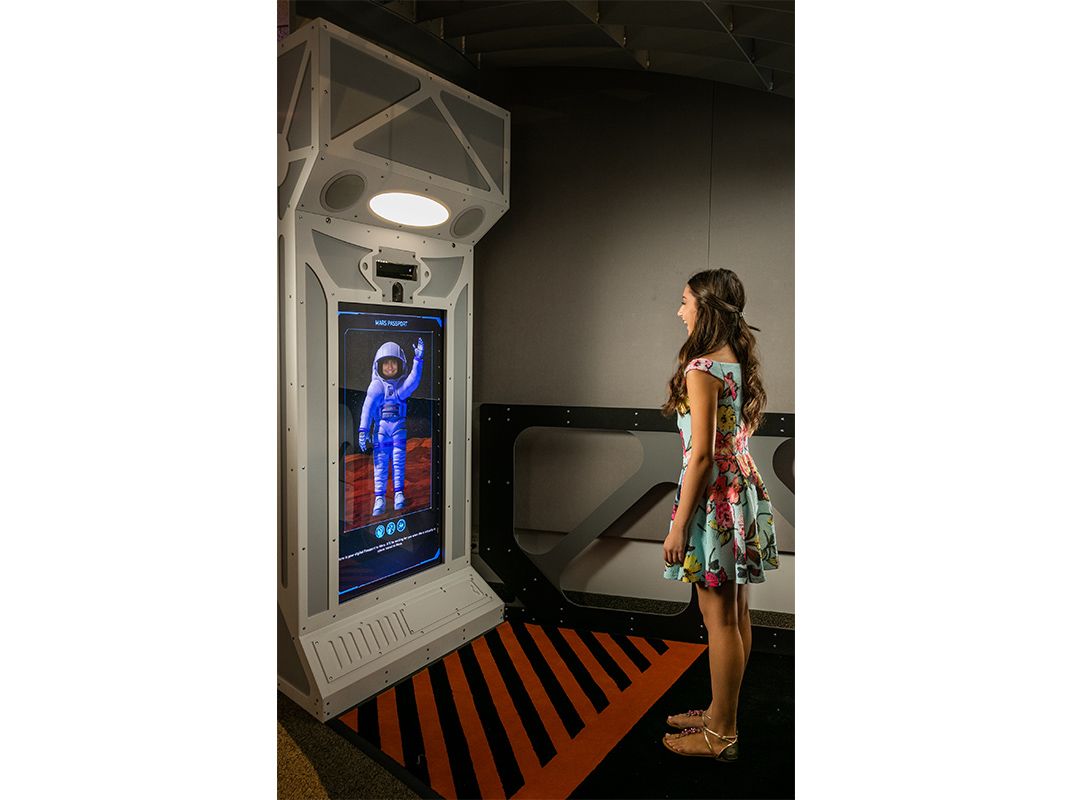Spread Your Wings at the Museum’s New “Above and Beyond” Exhibit
The fun part of aerospace.
/https://tf-cmsv2-smithsonianmag-media.s3.amazonaws.com/filer/6e/90/6e90855b-dead-4d66-81f1-64c7302604f6/16a_on2015_150728spreadwings001_live.jpg)
We flew in a flock—or, rather, our avatars did—following the lead bird as it plummeted toward Earth. At the last possible second, we flapped our wings—we moved our arms—and our bird selves soared into the sky. Our bodies had been transformed into virtual birds and, through motion-sensing technology, we manipulated our avatars as we learned about the forces of flight: lift, weight, thrust, and drag.
The “Spread Your Wings” simulation is just one of 20 activities in the new exhibit Above and Beyond, which opened August 1 at the National Air and Space Museum. Developed in conjunction with Evergreen Exhibitions and Boeing, the exhibit celebrates innovation in aerospace. Through augmented-reality technology, visitors can fly to Mars, design a jet (and race it against other pilots), and eliminate space junk orbiting Earth. While the exhibit is designed particularly for visitors ages seven to 14, everyone can find something challenging in this tech-heavy gallery.
“Above and Beyond is the most electronics-heavy exhibition ever housed at the National Air and Space Museum,” said Roger Launius, the Museum’s associate director, at the gallery opening. “And as such, it will help shape the future of this particular museum. We are engaged in serious efforts to understand how best to communicate with a range of people of diverse ages, backgrounds, and interests. In addition to being a superb exhibition in its own right, we hope to use the knowledge gained from how visitors interact with these displays to develop future exhibitry that will transform NASM into a 21st-century museum.”
Launius explained that in the next few years, the Museum plans to update all of its galleries, some of which haven’t been redesigned since the Museum’s opening in 1976.
What else is there to see? Visitors can step inside a capsule—surrounded by video screens—and experience a simulated ascent in a space elevator loosely based on the concept that cargo and people will one day be transported into space on a ribbon-like cable. During the ascent, visitors learn about the aircraft, spacecraft, and natural phenomena they would encounter along the way.
In “RoboFlyers,” visitors equip an unmanned aerial vehicle for an imaginary mission while learning about UAVs flying real missions today. On display is the tiny RoboBee, with a wingspan of just 1.2 inch. The micro-drone, developed by Harvard University’s School of Engineering and Applied Science, is capable of tethered flight, but its designers hope that a swarm of robotic insects will one day autonomously pollinate a field of crops—or even conduct military surveillance.
At the other end of the spectrum, the ScanEagle, developed by Insitu, sports a 10-foot wingspan and can fly for 24 hours without landing or servicing. Built for the fishing industry but now used mainly by the military, it carries a high-resolution camera that provides users with reconnaissance and surveillance information.
Dreams Aloft, a series of video interviews with young aerospace engineers, could almost be considered a recruitment film for the aerospace industry. When the engineers describe what they do—“I’m Ana, and I get to break things”—and how they ended up in aerospace, anybody watching gets the message: This stuff is fun, and the people who do it are happy. One recalls: “I had an astronaut helmet that I made out of a cardboard box that I wore to an age where you certainly shouldn’t have been wearing a cardboard box on your head.” (The cardboard helmet paid off; the wearer is now a member of the research and development team at Boeing.)
At the exhibit opening, shuttle astronaut Chris Ferguson, now director of Crew and Mission Operations for Boeing’s Commercial Crew Program, explained who Boeing would like to attract with this type of exhibit: “There are three kinds of young visitors to the Museum, in my view. Some go in and push the buttons and then go on to the next thing. Another group stands there in amazement and wonders, ‘When that kid pushed the button, why did that happen?’ And they’re the ones we know we have. They’re the ones who are going to help us get to Mars. It’s the third group, the ones who think ‘Do I really want to understand why this happens, or do I just want to take it for granted?’—that’s the group we hope to grab with interactive exhibits like this.”
Above and Beyond will run until January 3, 2016, then travel to the Saint Louis Science Center in Missouri; the National Maritime Museum in London; and the Museum of Flight in Seattle, Washington. You want your own Iron Man flying suit? Tell every seven- to 14-year-old you know to see it.

